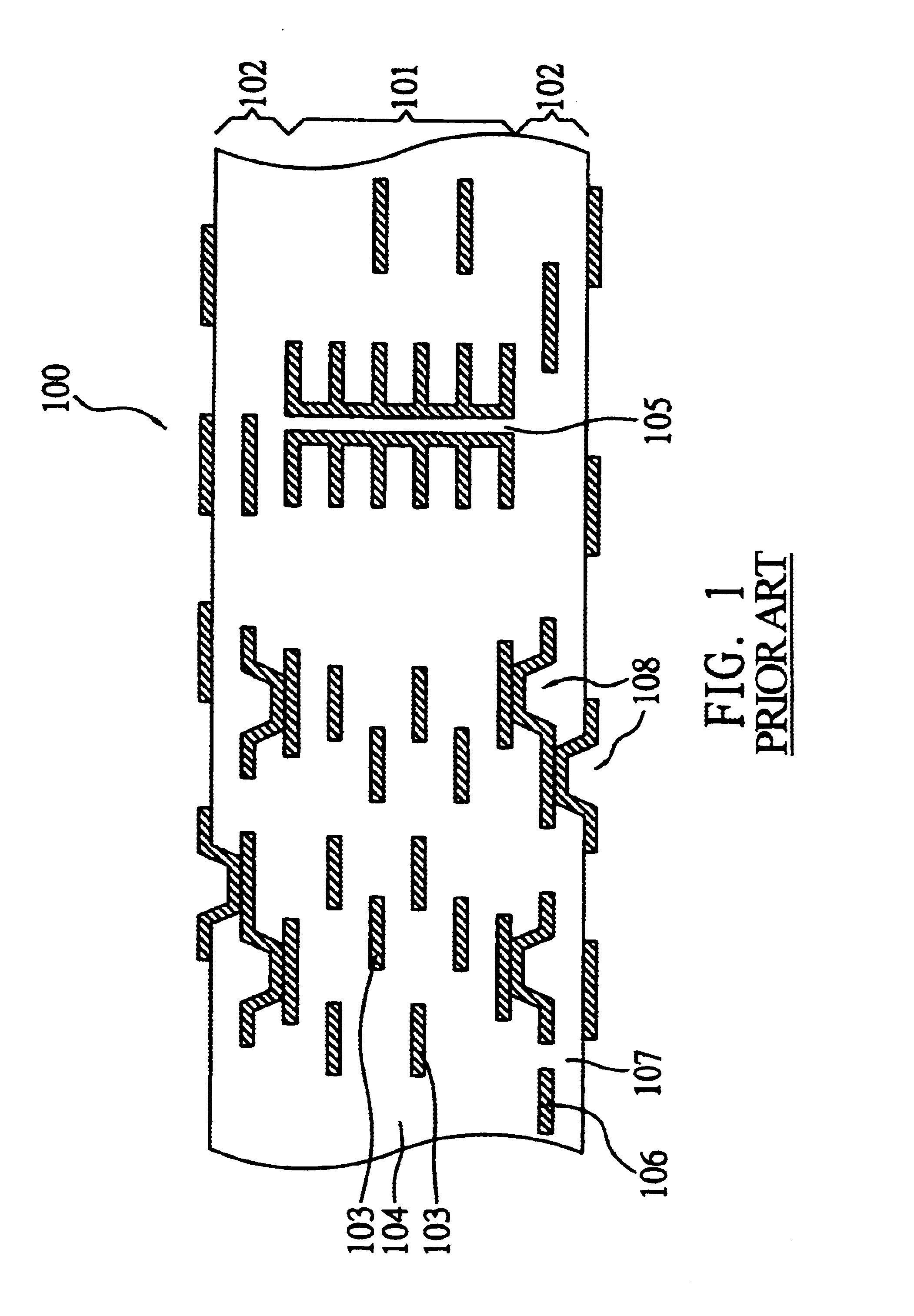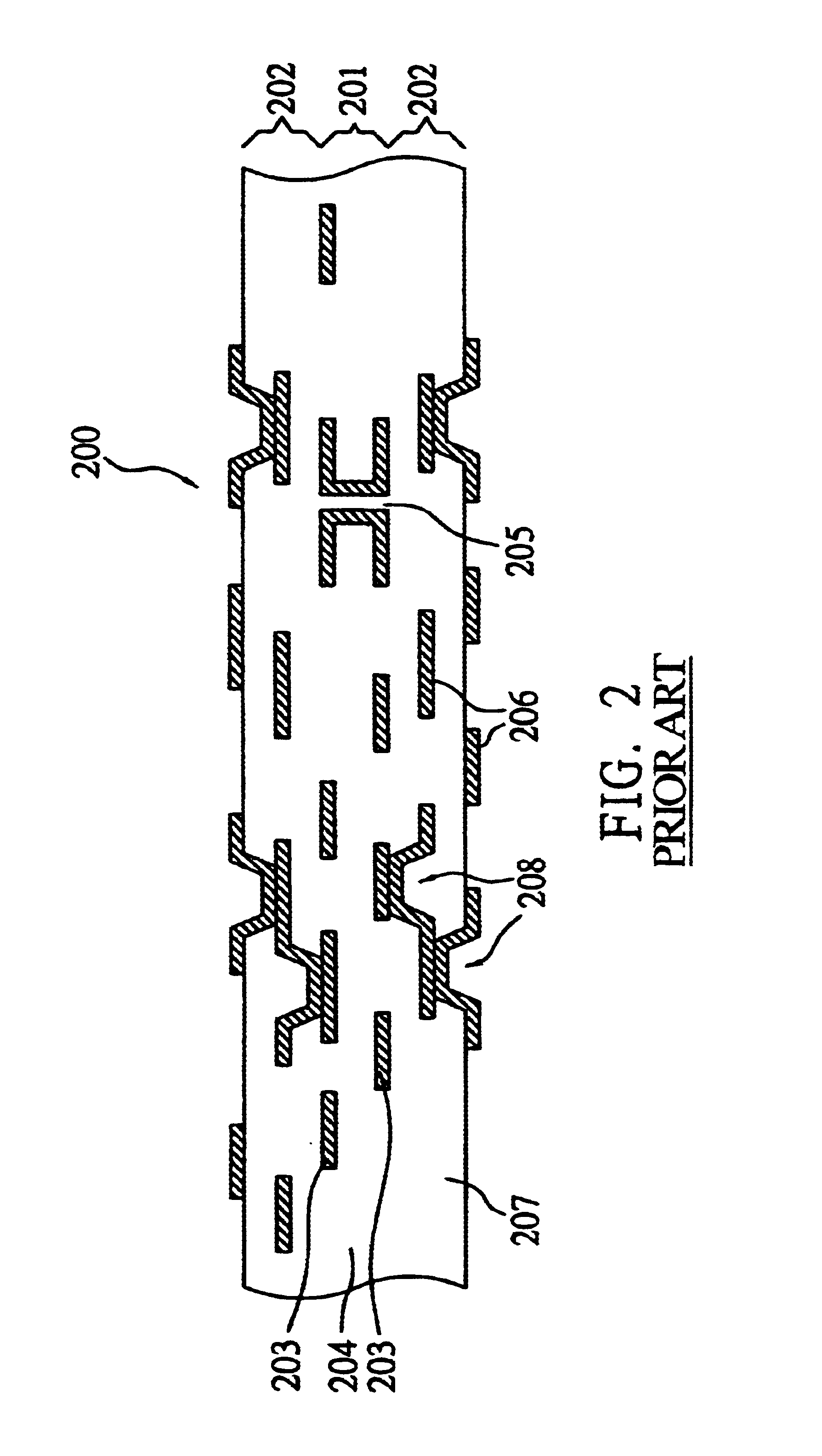Substrate with stacked vias and fine circuits thereon, and method for fabricating the same
a technology of fine circuits and vias, applied in the direction of printed circuit manufacturing, printed circuit aspects, printed element electric connection formation, etc., can solve the problems of limiting the design of printed circuit boards, affecting the production process, and affecting the quality of the produ
- Summary
- Abstract
- Description
- Claims
- Application Information
AI Technical Summary
Benefits of technology
Problems solved by technology
Method used
Image
Examples
Embodiment Construction
The foregoing objectives and advantages of the invention can be more fully understood by reference to the following detailed descriptions when taken in conjunction with the accompanying drawings. It is certain that the invention can be exemplified by using various other typed embodiments. The following preferred embodiments are only used for illustrating the invention and therefore should not limit the scope of the invention.
FIG. 5A to FIG. 5J illustrates the manufacturing method for making a multilayer printed circuit board in accordance with a preferred embodiment of the invention, which comprises a multilayer printed circuit board with the application of build-up process on surface of the core substrate for making an unsymmetrical multilayer printed circuit board.
As shown in FIG. 5A, a core substrate 5 having an upper surface 5a and an opposing lower surface 5b is firstly provided in which a patterned first conductive circuit layer 51 and a metal layer 52 is formed on the top 5a ...
PUM
| Property | Measurement | Unit |
|---|---|---|
| diameter | aaaaa | aaaaa |
| diameters | aaaaa | aaaaa |
| conductive | aaaaa | aaaaa |
Abstract
Description
Claims
Application Information
 Login to View More
Login to View More - R&D
- Intellectual Property
- Life Sciences
- Materials
- Tech Scout
- Unparalleled Data Quality
- Higher Quality Content
- 60% Fewer Hallucinations
Browse by: Latest US Patents, China's latest patents, Technical Efficacy Thesaurus, Application Domain, Technology Topic, Popular Technical Reports.
© 2025 PatSnap. All rights reserved.Legal|Privacy policy|Modern Slavery Act Transparency Statement|Sitemap|About US| Contact US: help@patsnap.com



